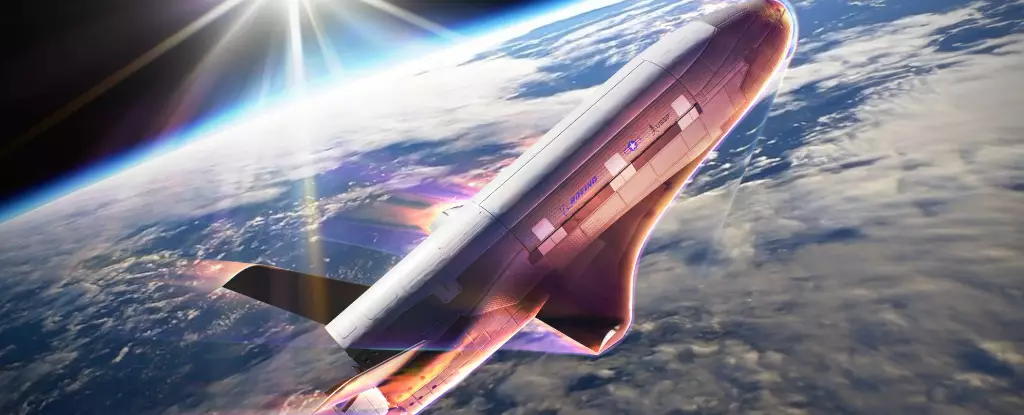The X-37B Orbital Test Vehicle (OTV) has been a topic of intrigue and speculation since its first flight in 2011. Developed by Boeing and serving the U.S. Space Force (USSF), this remarkable space plane operates as a remotely piloted and reusable spacecraft, ostensibly for conducting experiments in Low-Earth Orbit (LEO). However, the veil of secrecy surrounding its missions raises more questions than answers regarding its true purpose. As we delve into the current OTV-7 mission initiated on December 29, 2023, we will explore the implications of its groundbreaking maneuvers and the furtherance of advanced space technologies.
Space exploration is not merely a scientific endeavor but has also become a vital strategic front for national defense. The X-37B, with its capacity to navigate LEO—from 240 to 800 kilometers above the Earth’s surface—fits into this narrative as a dual-purpose tool for both scientific discovery and military readiness. The spacecraft’s seventh mission reportedly focuses on studying the effects of space radiation and advancing Space Domain Awareness (SDA) technologies, reflecting a growing emphasis on securing U.S. interests in outer space.
Yet, despite the declared objectives of the OTV-7 mission, a significant portion of the X-37B’s activities remains classified. This lack of transparency breeds conjecture about its capabilities, granting it an air of enigma. Many experts suspect that its involvement goes beyond testing reusable vehicle technologies; they suggest it may play a role in a broader strategy for space-based reconnaissance and surveillance. Former Air Force Secretary Heather Wilson’s remarks about the vehicle’s orbit patterns hint at operational tactics that could confuse and mislead adversaries—a feature that underscores its strategic importance.
One of the key highlights of the OTV-7 mission is the unprecedented aerobraking maneuver, wherein the X-37B will skim the Earth’s upper atmosphere to reduce its orbital speed. This innovative technique not only conserves fuel but also enhances the spacecraft’s ability to conduct covert operations. By dynamically altering its approach, the X-37B can execute low passes over critical locations on Earth without alerting those who might be tracking it.
The historical context of aerobraking—previously employed by Mars missions—underscores the sophistication of this technology. The early successes of Mars missions such as the Global Surveyor and Odyssey laid the groundwork for the X-37B’s current applications. This achievement represents a pivotal point not only in the X-37B’s evolution but also in the broader landscape of space operations, where agility and stealth become paramount.
The U.S. Space Force has displayed an unwavering commitment to pushing boundaries in aerospace technology. Secretary of the Air Force Frank Kendall and Chief of Space Operations Gen. Chance Saltzman have both emphasized that the X-37B’s recent advancements in aerobraking represent a significant leap forward in space operational capabilities. This determination to achieve “groundbreaking innovation” speaks volumes about the military’s view on the strategic relevance of space as an evolving frontier.
However, the attribution of success to “dedication and perseverance” begs a critical inquiry: Is the U.S. Space Force adequately addressing the ethical implications and international regulations surrounding space operations? As missions like OTV-7 set precedents for future engagements in space, the necessity for transparency and accountability in such endeavors remains paramount.
As the X-37B continues its mission and pushes the limits of space operations, it embodies a dual ethos of exploration and defense. While the technological achievements are commendable, they come with challenges that extend beyond the confines of engineering. The question remains whether the U.S. Space Force will navigate the balance between innovation and the need for responsible stewardship of space. The X-37B is not just a tool for testing technologies; it represents a complex intersection of research, security, and geopolitical strategy.
Moving forward, it is essential that the advancements in space travel, exemplified by the X-37B, be met with thoughtful consideration of their potential impacts on international relations and the shared environment of outer space. As humanity seeks to explore new frontiers, an ethos of collaboration and responsibility could ensure a sustainable and peaceful space future for all.

